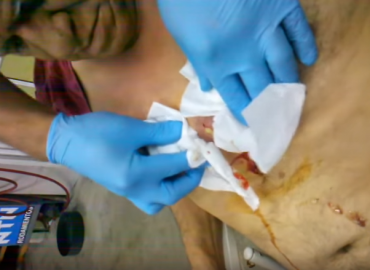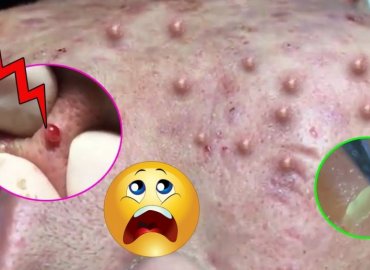Without proper treatment, cystic acne can develop into a bevy of scars and skin blemishes, including ice pick scars, larger pits in the skin, shallow depressions, and red, raised scars. There are also many psychological consequences related to cases of cystic acne, and it’s vital to treat this condition as soon as possible to avoid damaging, long term effects.
Acne Scars
Acne scars are one of the most emotionally distressing aspects of cystic acne. Severe acne cases can see individuals left with deep marks and raised scars on the surface of the skin, and sometimes these marks can seem impossible to treat. There are various types of acne scars; they come in many shapes and colors, and may be raised or depressed, known medically as keloid and pitted, respectively. Understanding the type of acne scar your skin exhibits is essential when learning ways to treat and avoid acne scarring.
Depressed Scars
Pitted acne scars are the most common of scars left behind by cystic acne, and these scars generally sit on top of collagen rich scar tissue. This tissues prevents the skin from repairing the deep indentation.
Boxcar Scars
Boxcar scars are characterized by an angular shape and exhibit sharp, vertical edges. Normally found on the temple or cheek, they can develop in a variety of depths. These scars may resemble those left after a bout with chicken pox.
Ice Pick Scars
Ice pick scars are a common consequence of inflammatory acne breakouts, and usually measure less than 2mm in diameter. These types of acne marks look deep, seeming to extend far into the skin.
Rolling Scars
Rolling scars are shallow and wide across the diameter, and are caused by damage that’s occurred under the skin. They occur when multiple bands of tissue develop in deeper structures of the skin’s surface and can become more noticeable with age.
Raised Acne Scars
Raised acne scars are less common than pitted scars, but they are also often associated with inflammatory acne. They are often more obvious than depressed scars and may be more difficult to treat.
Hypertrophic Scars
Hypertrophic scars are noticeably raised and may have a lumpy appearance. They are very similar to keloids but tend to be smaller and fade over time, and are much more common. They are present in all racial groups, and affect men and women equally.
Keloid Scars
These scars form when excess collagen production causes scar tissue to form in excess, even after the wound is filled in. Collagen is produced to help heal the skin damage, but when this collagen spreads beyond the wound left behind by an acne blemish, larger scars can become raised. Keloids can form on any part of the body, but tend to be found on the chest and back. Only about 10 percent of people develop keloids, and they may come from acne, other minor injuries, and even bug bites. The severity of keloid scars varies with different skin types, but are more common in patients with darker skin tones.
Hyperpigmentation
After acne heals, there may be red or dark-colored marks left behind on the skin. These are commonly confused for scars, but they’re actually what is medically referred to as macules, a result of hyperpigmentation. Hyperpigmentation is common among individuals of Latino, Asian, and African descent. The most common cause of macules is improper acne extraction. It’s vital to leave acne lesions to heal, as picking or popping pimples can result in a longer healing process and see the formation of numerous scars.
There are numerous treatments and ointments available designed to heal acne scars, including laser and light therapies, subcision, dermal injections, chemical peels, and punch grafts. The invasiveness and cost of these treatment plans can vary greatly.







